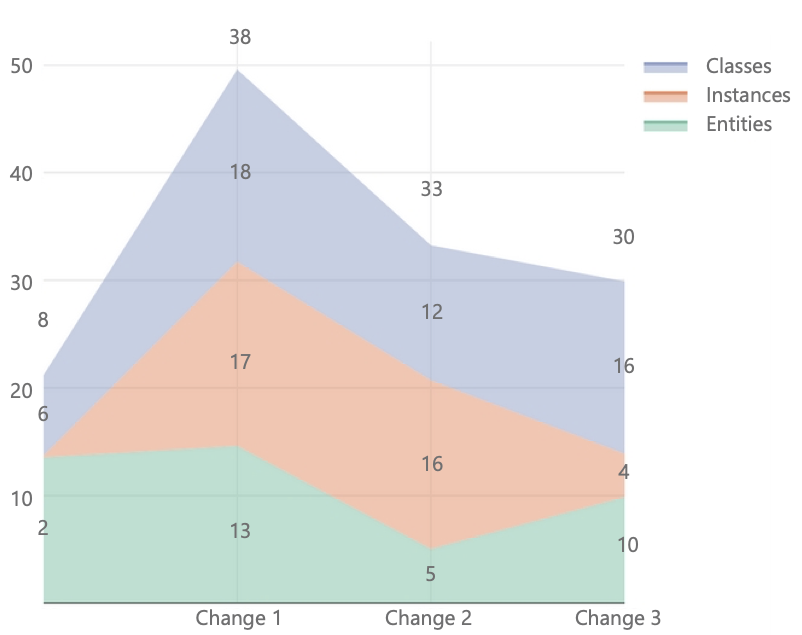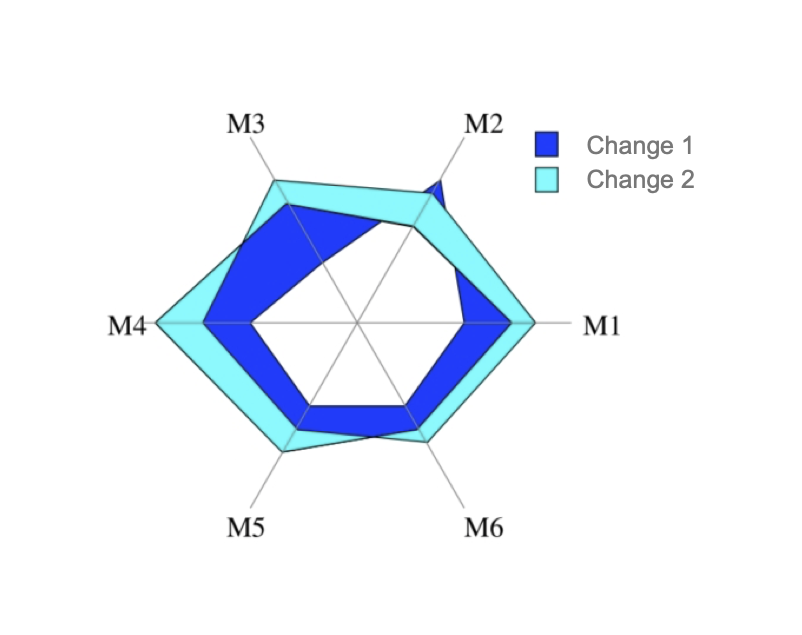Ontology Editing: Requirements for Visualization of Changes and their Impact
The goal of this survey is to gather requirements, preferences, and suggestions for how to visualise information about ontology changes in real time, within an ontology editor. It is aimed at ontology engineers, curators, editors, and maintainers.
Dear Participant
In this survey, we are looking for you to answer questions about visualization of ontology changes. Specifically, what kind of feedback would you like to receive visually while you are editing an ontology? There are 4 sections in this survey: basic demographics, general visualization preferences, specific questions about mockups, and a wrap up.
This survey is deployed using LimeSurvey, which adheres to the privacy protection of the University of Zurich. There are no risks or benefits of any kind involved with answering this survey. Your individual privacy will be maintained in all published and written data and at any point you can exit the survey without finishing. The collected data will be evaluated and used for visualization choices of a Protégé plugin. You will be asked specifically, if we can quote answers from the second and third part at the end of the survey solely for an academic publication.
To proceed with the survey, you need to consent to the above terms by checking the box below.
With best regards,
Romana Pernischova
There are 25 questions in this survey.
Demographic Information
How old are you?
How long have you been working with ontologies? (in years)
Occupation and work area
Working with ontologies:
| Yes | Uncertain | No | |
|---|---|---|---|
| Do you work or have previously worked with ontologies? | |||
| Does or has your work include(d) changing ontologies? |
Give a specific example of an ontology you work with. Add some details about the domain of the ontology and an example (if possible) what the ontology is used for.
What tools/SDKs do you use for viewing and/or changing ontologies?
What does the term "ontology change" mean for you? How do you define this term?
Any other comments about the questions so far?
Changing an Ontology
What are the changes you apply to an ontology regularly?
Please rank the following options by putting one you apply the most first and so on.
-
Adding new content, classes, or properties
-
Adding details to already present content
-
Correcting mistakes (typos, wrong values, etc.)
-
Removing content, classes, or properties
-
Restructuring, changing subclass relationships
-
Correcting inconsistencies
-
Defining new restrictions and rules
-
Changing restrictions and rules
Are there any other ways you change ontologies, which are not mentioned above?
What textual summary or visualization of changes do you already use?
Please, add a comment about tools, or specific measures, where applicable.
- Summary of the applied changes.
- Changed primitive measures of the ontology.
- Changed composite measures of the ontology.
- Some impact/consequences of the applied changes.
-
Other:
Primitive measures describe the ontology with e.g., number of axioms, classes, properties, etc.
Composite measures are made of a ratio of primitive measures, e.g. class property ratio.
Impact/Consequences e.g. consistency of the ontology, retraining of a prediction model, recalculation of an embedding used in a different task, etc.
What kind of textual summary and visualization about ontology changes would you find helpful?
| Textual Summary | Visualization | ||||||||||
|---|---|---|---|---|---|---|---|---|---|---|---|
| very helpful | helpful | somewhat helpful | not helpful | don't care/know | very helpful | helpful | somehow helpful | not helpful | don't care/know | ||
| Number and types of changes: | |||||||||||
| Change in primitive measures: | |||||||||||
| Change in composite measures: | |||||||||||
| Some impact/consequences on the applied changes: | |||||||||||
Composite measures are made of a ratio of primitive measures, e.g. class property ratio.
Impact/Consequences e.g. consistency of the ontology, retraining of a prediction model, recalculation of an embedding used in a different task, etc.
Please specify why you think any of the options above would not be helpful:
Any other comments about the questions so far?
Mockups of a Prototype
How informative do you find the following texual summaries and visualization?
Rate each possibility from 1 (not informative) to 5 (very informative). The colors have no meaning.
| (not at all) 1 |
2 |
3 |
4 |
(very) 5 |
|
|---|---|---|---|---|---|
A list of the most recently changed axioms.
|
|||||
A table view showing the change in value.
|
|||||
A graph visualizing one or multiple measures
|
|||||
One impact measure signaling the consequences of the changes with a detailed explentation of its meaning and calculation.
|
|||||
An indicator of ontology consistency.
|
How informative do you find the following visualizations showing one or multiple ontology measures?
Rate each possibility from 1 (not informative) to 5 (highly informative).
| (not at all) 1 |
2 |
3 |
4 |
(very) 5 |
|
|---|---|---|---|---|---|
Line chart showing a selected measure
|
|||||
Bar chart showing one or more measures
|
|||||
Area chart showing one or multiple measures
|
|||||
Spider chart showing multiple measures which have similar scale
|
Can you think of any other textual summaries or visualizations to show ontology changes or change impact/consequences?
Choose your preferred setup of textual summaries and/or visualizations, which would suit your needs during changing of an ontology.
(You do not have to use all elements in your ranking. The colors have no meaning.)
-
Consistency display.

-
Impact measure display (with choice of measure).

-
Most recently changed axioms.

-
Table with primitive/composite measures (with choice).

-
Graphical visualization of changed primitiv/composite measures (area chart was chosen randomly).

Any other comments about the questions so far?
Wrap-up
Interest in a Protégé plugin for visualization of changes and change consequences:
| Yes | Unsure | No | |
|---|---|---|---|
| Would you be interested in seeing changes and its consequences visualized while editing an ontology? | |||
| Would you be more aware of changes and its consequences, if such numbers were at your disposal? | |||
| Do you find it necessary to alert the ontology engineer about impact of changes? |
Feedback/Comments about the topic in general:
Can we quote your answers (anonymously) to the questions about visualizations and the mockups directly in our publication? *
-
Yes
-
No
Would you be interested in participating in our follow up user study about this topic? *
-
Yes
-
No
Please provide an email address, if you would be interested in participating in the follow up study:
Thank you very much for completing this survey. Your answers will be considered and hopefully reported in a publication soon. With the provided email address we will contact you for a request of participation for a follow up user study as well as with the publication resulting from this study.
Thank you for your time and expertise!
03.10.2020 – 12:54
Submit your survey.
Thank you for completing this survey.



How often do you change an ontology?